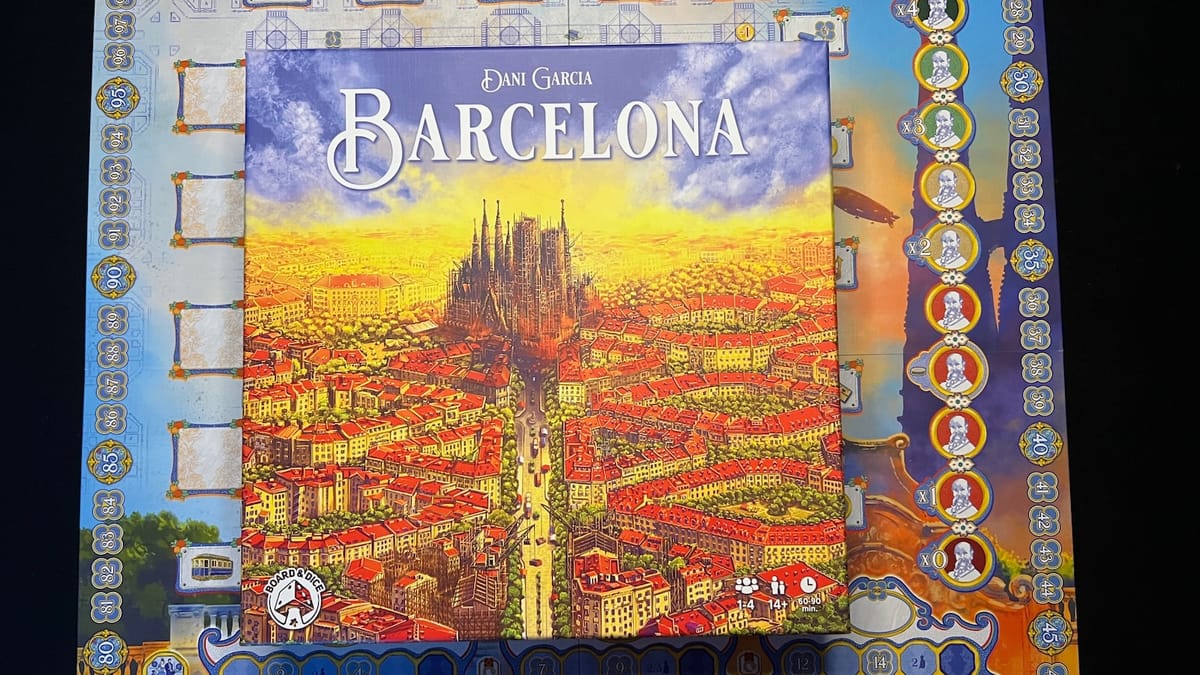
Board games and history are two of my favorite things. For many years, I taught social sciences to middle and high school students and though I still work in education, I miss learning new facts and stories from history and imparting them to the next generation. When I get to learn while I am board gaming, I get that same rush. With Barcelona, I found myself learning the history of the city as I learned the rules, and saw themes and mechanics meet in beautiful harmony.

Barcelona is a 2023 release from designer Dani Garcia and publisher Board & Dice for 1-4 players. As with many of the games from Board & Dice’s lineup, this game is rooted in history and takes some fun spins on the worker placement mechanic. In the game, players are architects working in the newly sectioned neighborhoods outside the walls of Barcelona in the mid to late 1800s. Player actions will upgrade the neighborhood, attract new citizens, and catch the eye of master builder Ildefons Cerdá. Cerdá has his own favor track, located on the main board, and players can multiply their scoring opportunities by impressing the master builder.
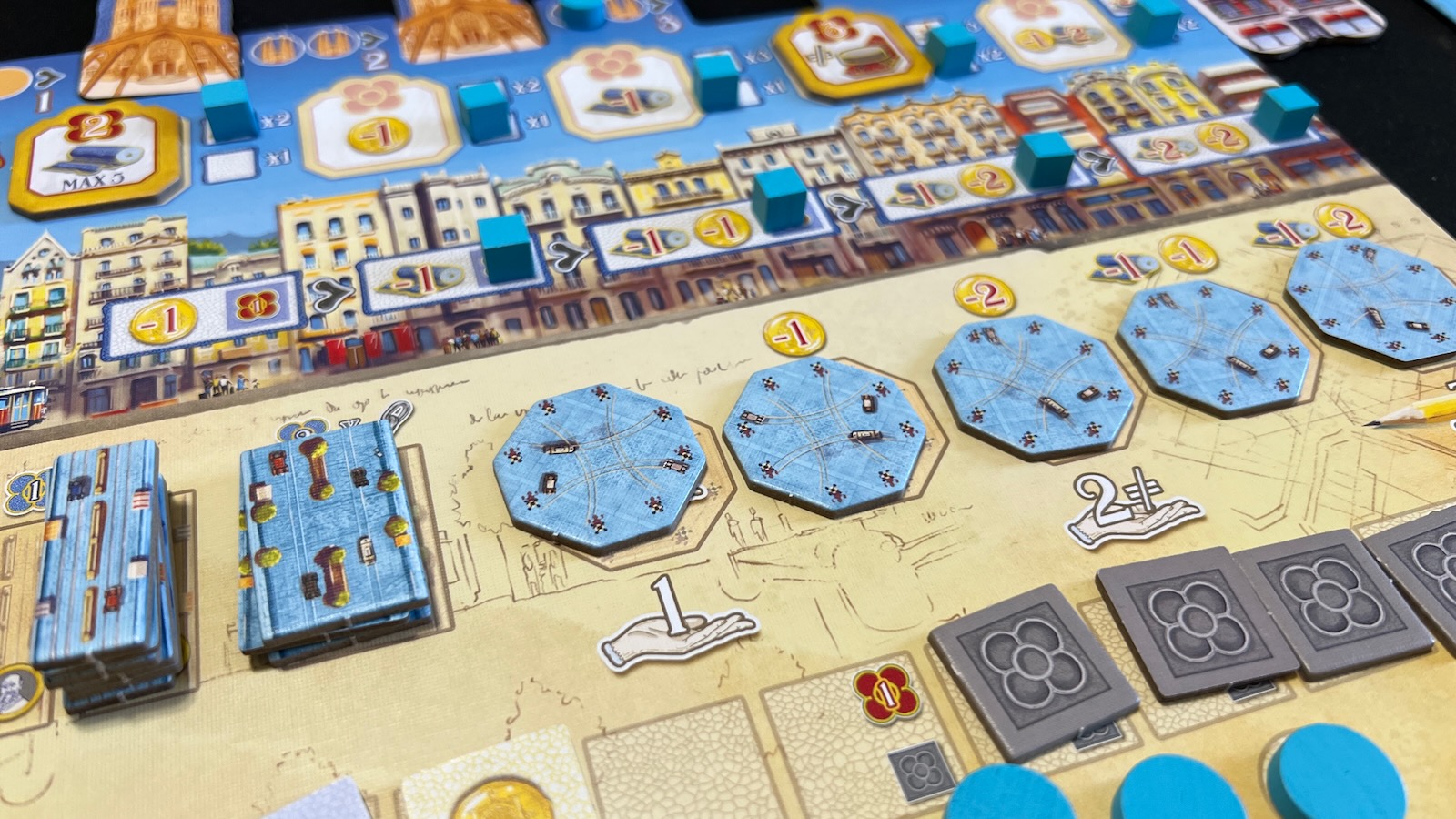
Players start the game with their own player mat which holds streets and intersection tiles in the player color, building ownership cubes, a personal Sagrada Familia track, and places to store resources, street tiles, and end game scoring tiles.
Players will take turns sequentially to try and earn more points than the other players by the end of three intermittent scoring breaks. Players can earn points by building streets and intersections, contributing to the construction of the Sagrada Familia, increasing multipliers, building paving stones, and gaining end game scoring tiles. A player turn consists of four steps:
- Placing two stacked citizen tiles on the board in one of the street intersections
- Executing the actions at the end of each street
- Constructing a building on the board if conditions are met
- Drawing two new citizen tiles from the bag

Citizen tiles come in three different colors representing the working, middle, and upper class citizens moving to the neighborhood. Players will stack these citizens in any order when starting their turn and placing them on an intersection. At the end of the turn, players will look at the board and construct one of four types of buildings, based on the citizens surrounding a city block. Constructing different levels of buildings will gain the player bonuses and victory points. Once a building has been constructed, citizen tiles are moved to citizen tracks (which basically serve as a timer for the game). As these tracks fill, intermittent scoring rounds will trigger, with all players gaining victory points based on the track section condition, randomized at the beginning of the game.
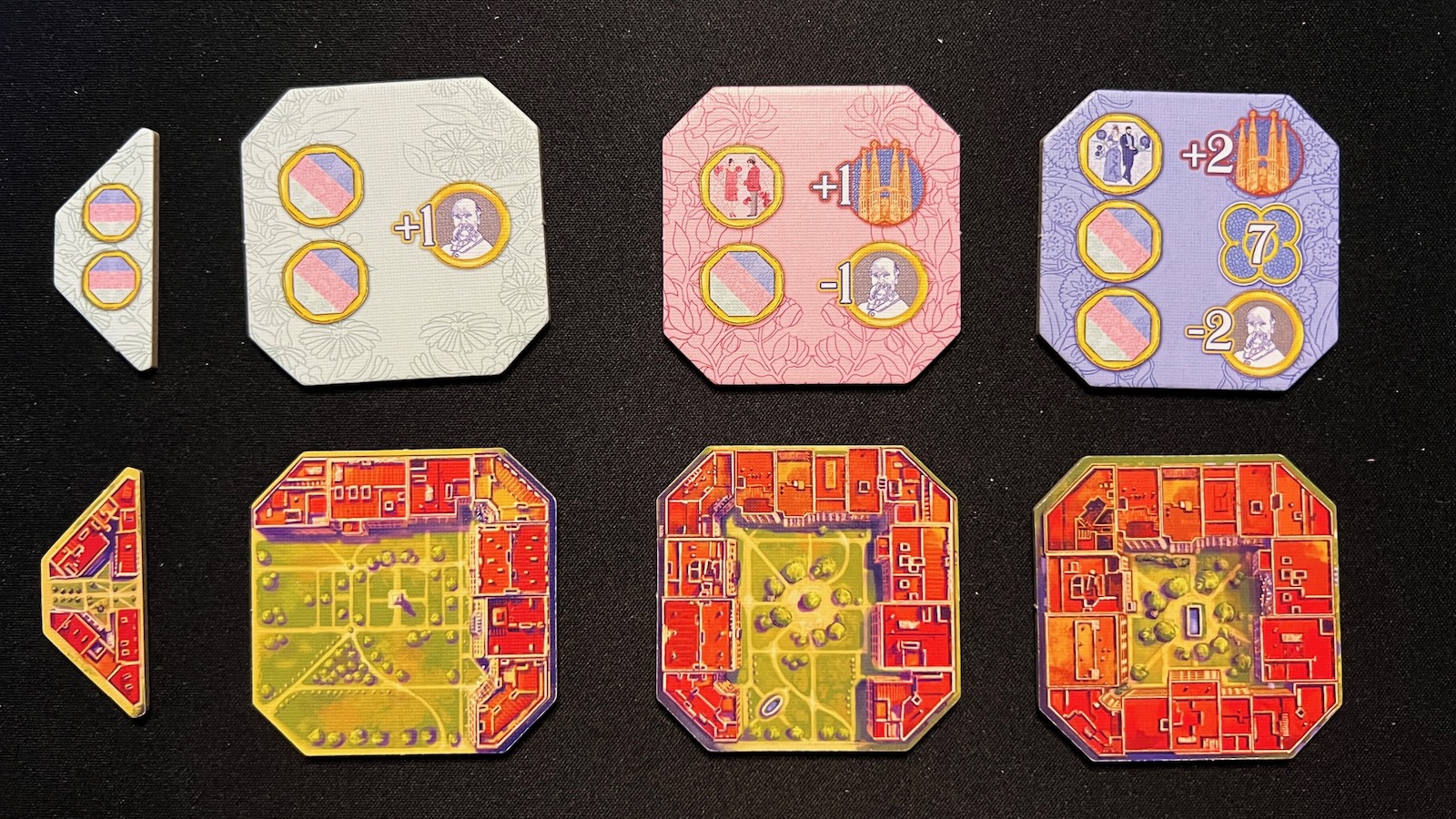
After placing citizen tiles at the beginning of their turn, players can take the 2-3 actions corresponding to the end of the streets from their intersection. Actions include:
- Building small and large street sections
- Building intersections
- Gaining gold and cloth resources
- Placing cobblestones on the cobblestone board from the player board
- Building public works buildings
- Gaining end game scoring tiles
- Upgrading end game scoring tile locations
- Moving the player’s tram
Some of these actions will require players to spend resources from their player board to carry out the action.
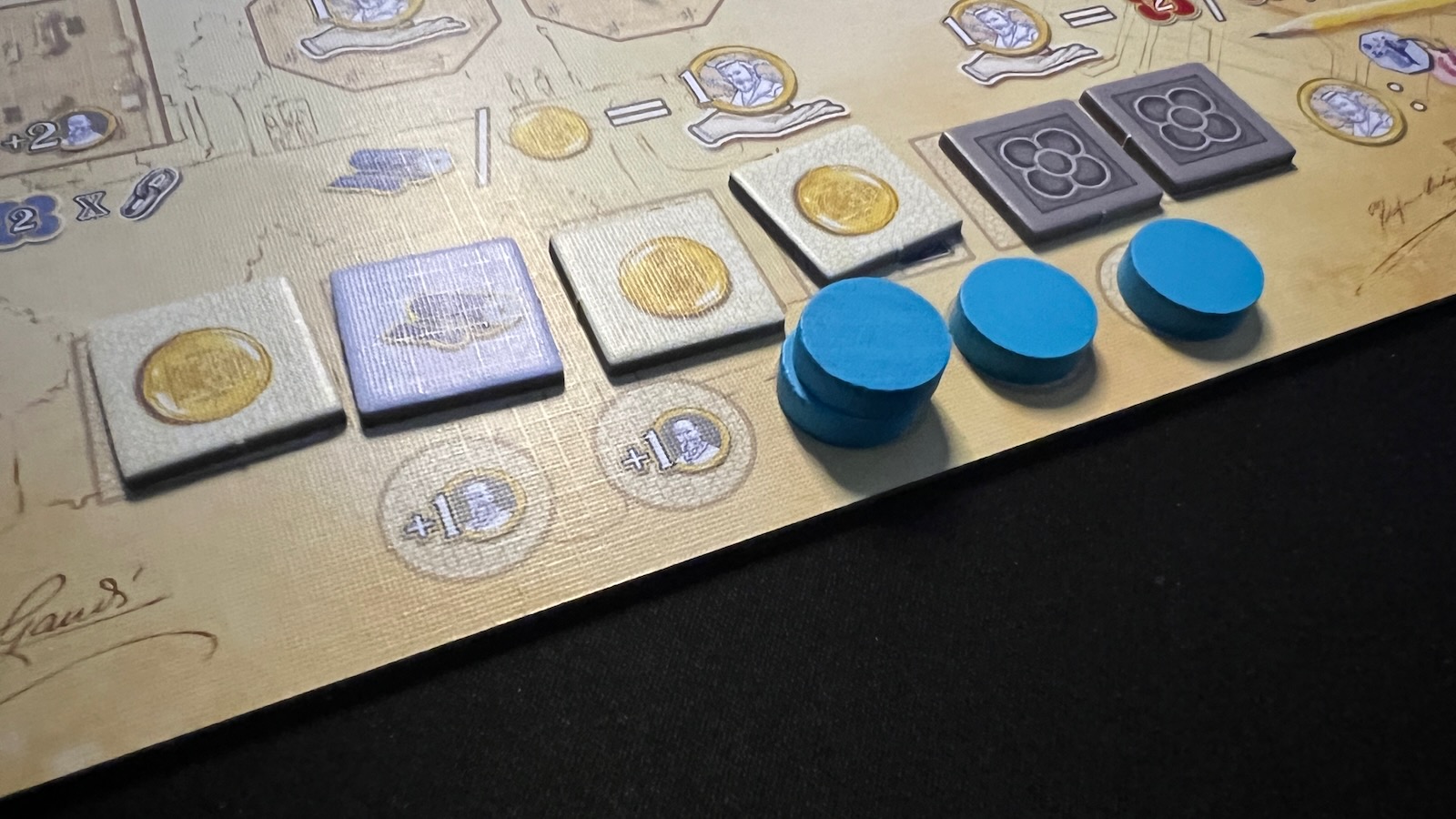
Building streets and intersections gain the players points based on where they are placed and other street tiles or bonuses printed on adjacent street sections. Utilizing another player’s streets and intersections when taking other actions gains bonuses for the opposing player. Cloth and gold are the currency in the game and player store them on their player boards. Players can open up more storage by taking the cobblestone action and placing them on the cobblestone board. This action gives further bonuses based on placement and adds end game scoring bonuses based on how many cobblestones are removed from the player board.
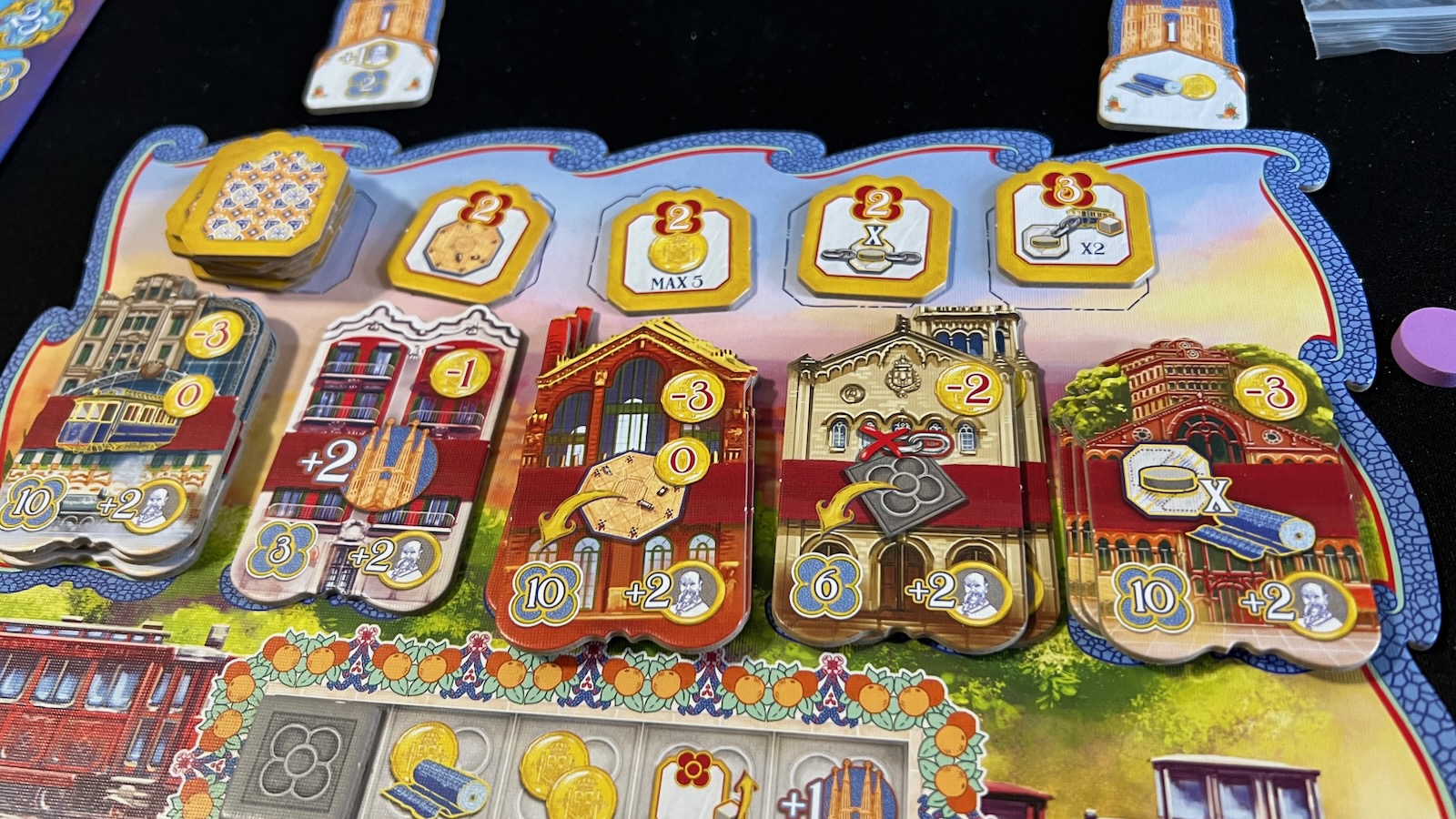
Public service buildings are randomized during set up and give players one time bonuses that normally result in taking an extra upgraded action. Players will receive a number of victory points and movement up the Cerdá track as well.
End game bonus tiles, called Modernisme tiles, help players gain a lot of points and plan the direction they would like to take their game such as placing out all of their small streets or collecting a specific type of resource. These end game scoring tiles are added to one of five spots on each player’s individual board, some of which require a resource payment. Each Modernisme spot can also be upgraded for a cost, increasing the end game multiplier for the tile’s scoring condition.
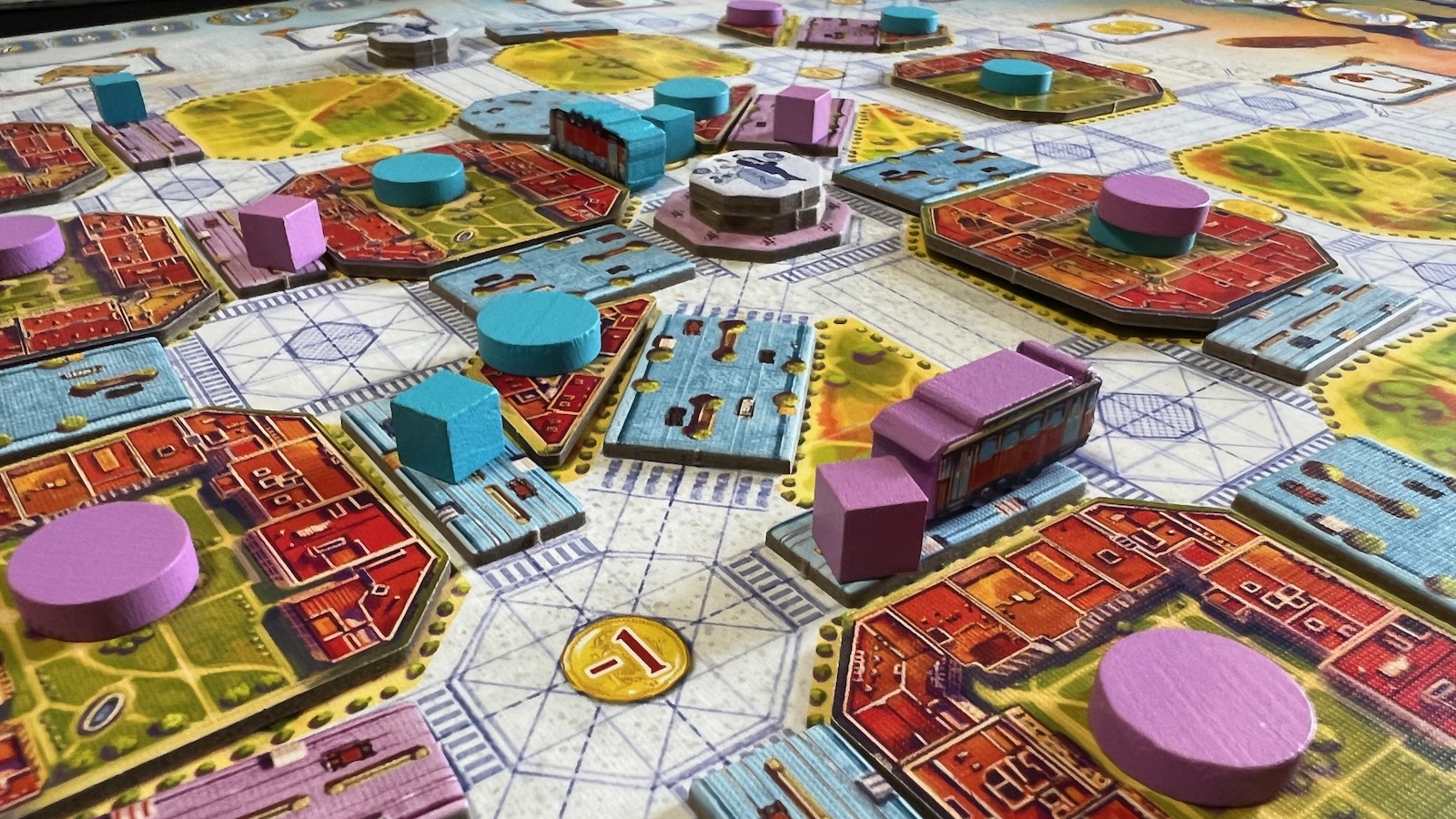
Moving the tram is a way to get extra actions on a player’s turn. Players move their tram through the streets and drop off a passenger, for a small fee, to activate the corresponding action at the end of the street. Dropping off passengers also adds end game points depending on how many tokens have been removed from the player board.
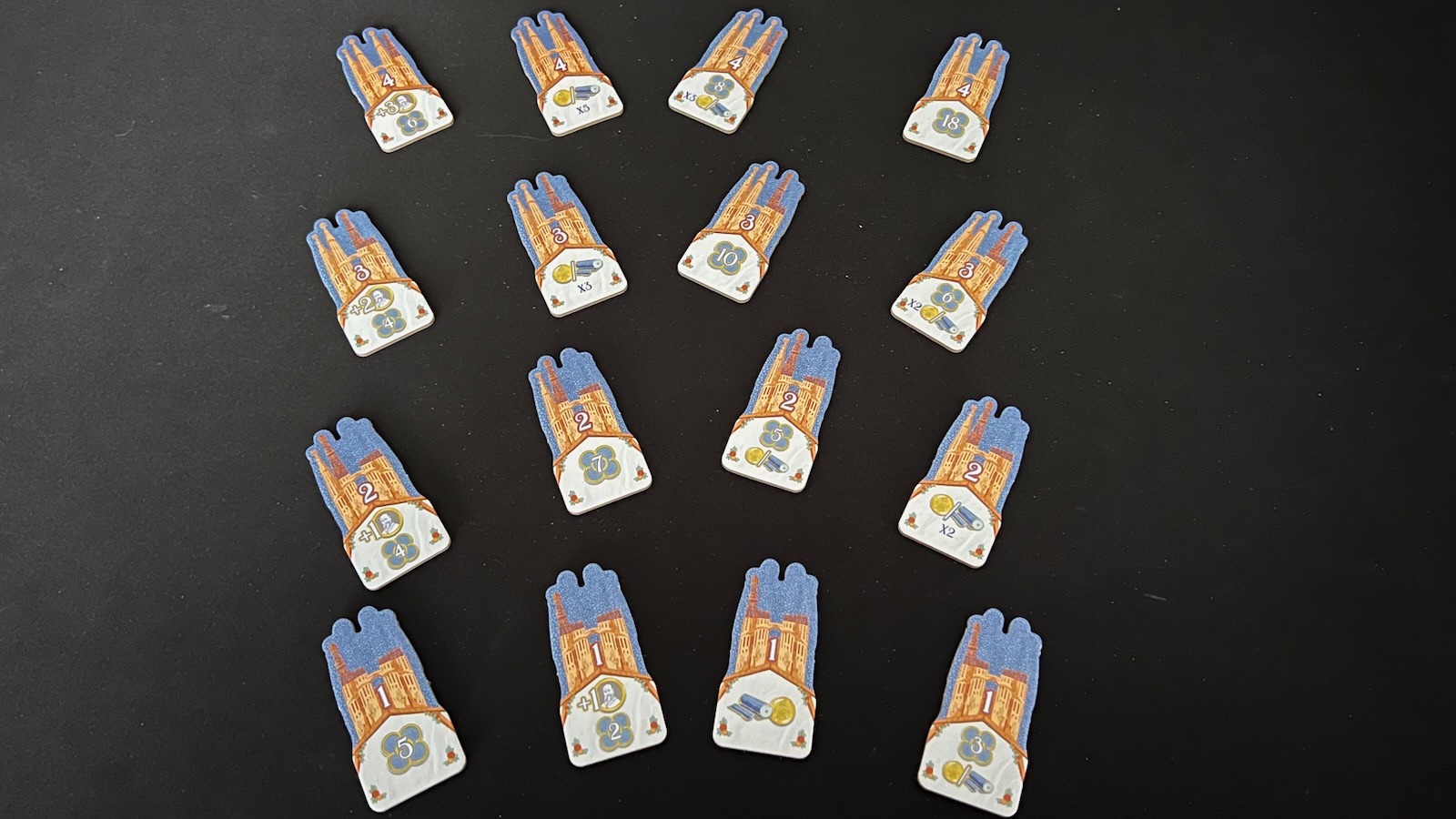
Each player board also features a Sagrada Familia track. As different actions move a marker down the track, players will build different sections of the world famous cathedral. When activating a sagrada slot on the board, players will select a bonus from the tableau of sagrada tiles. Each level gives increasing bonuses to the players.
After the third Cerdá scoring round takes place, the players will finish the current round so that all players have the same number of turns. Players will then score their end game tiles for the final point total.
Rulebook
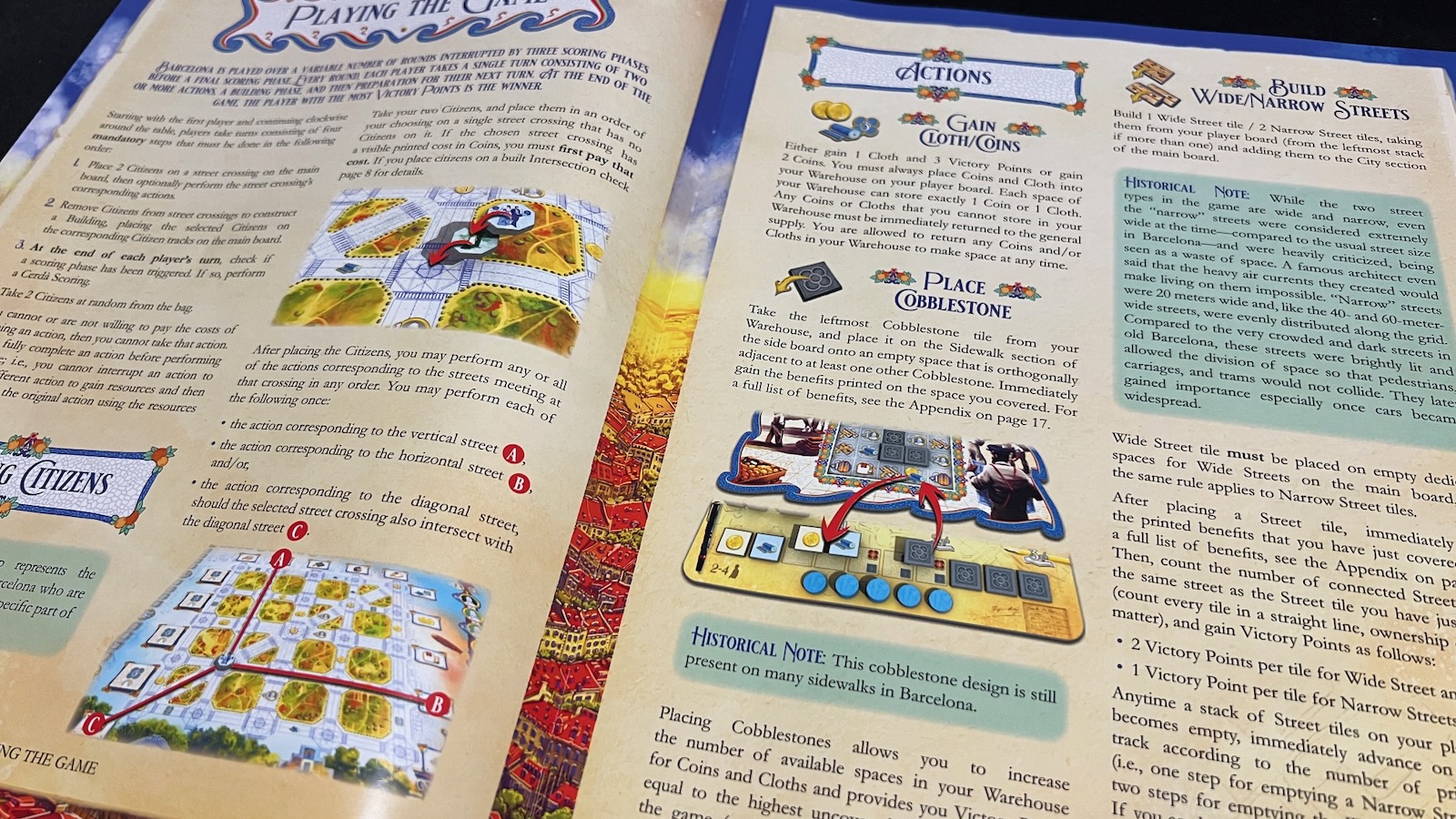
This rulebook is fantastic. The rules are easy to learn and include examples of how concepts work throughout. The best part about this rulebook are the historical notes tied to each aspect of the game. For example, the width of the streets was criticized at the time of construction for being too wide, but opinions changed with the advent of motor vehicles. In another example, the original architect only wanted blocks to have buildings on two sides of equal apartments despite a person’s wealth. This was not honored with many of the blocks being built on all four sides. This is the reason why Level 2 and Level 3 buildings include a penalty in the game, as these types of building go against the wishes of Cerdá’s original plan. The rulebook also includes examples of gameplay throughout, an appendix of how certain tiles work, and a quick reference chart on the back page; all highlights of a great and concise 20 page rulebook.
Production
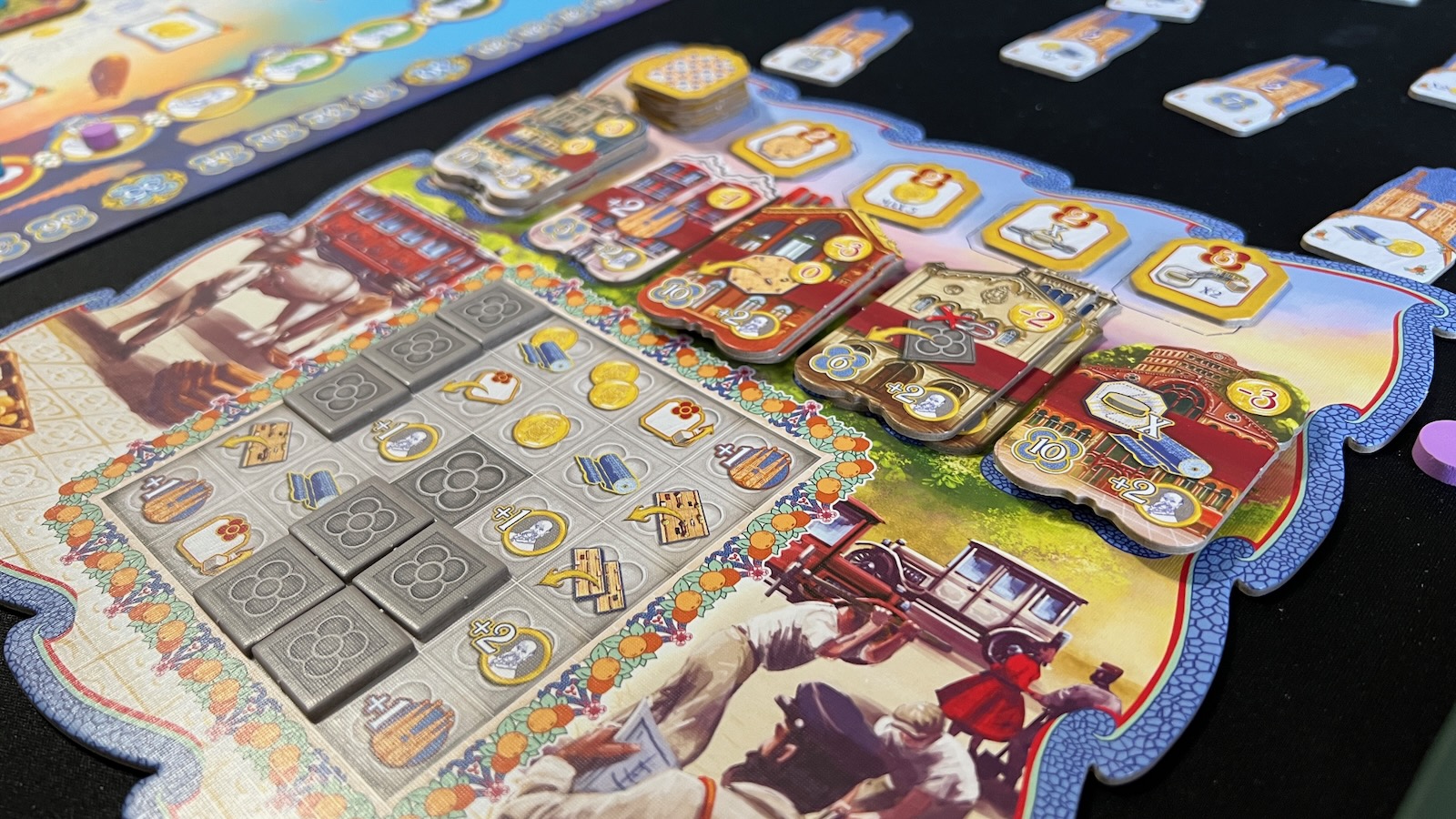
The components of the game are also of high quality. The cardboard used for the tiles is sturdy and the cardboard citizen tiles are extra thick and durable to stand up to being shuffled around in a bag. Most of the game is contained to the main board, though a small side board is needed to house the paving stone grid, public service buildings, and Modernisme tiles. The board itself is compact and easy to follow. With the citizen, scoring, and Cerdá tracks all included on the board, it is easy to see who is winning and how much game is left to be played. As you add more pieces to the blank grid of the city, the board becomes a colorful tapestry of expansion. The artwork and color palette of the game are very inviting. Players choose between pastel blue, orange, gray, and purple, rather than the normal primary colors. The artwork on the board and tiles takes you back to 1800s Barcelona and distracts you from the work your brain is doing trying to figure out your next move.
Gameplay
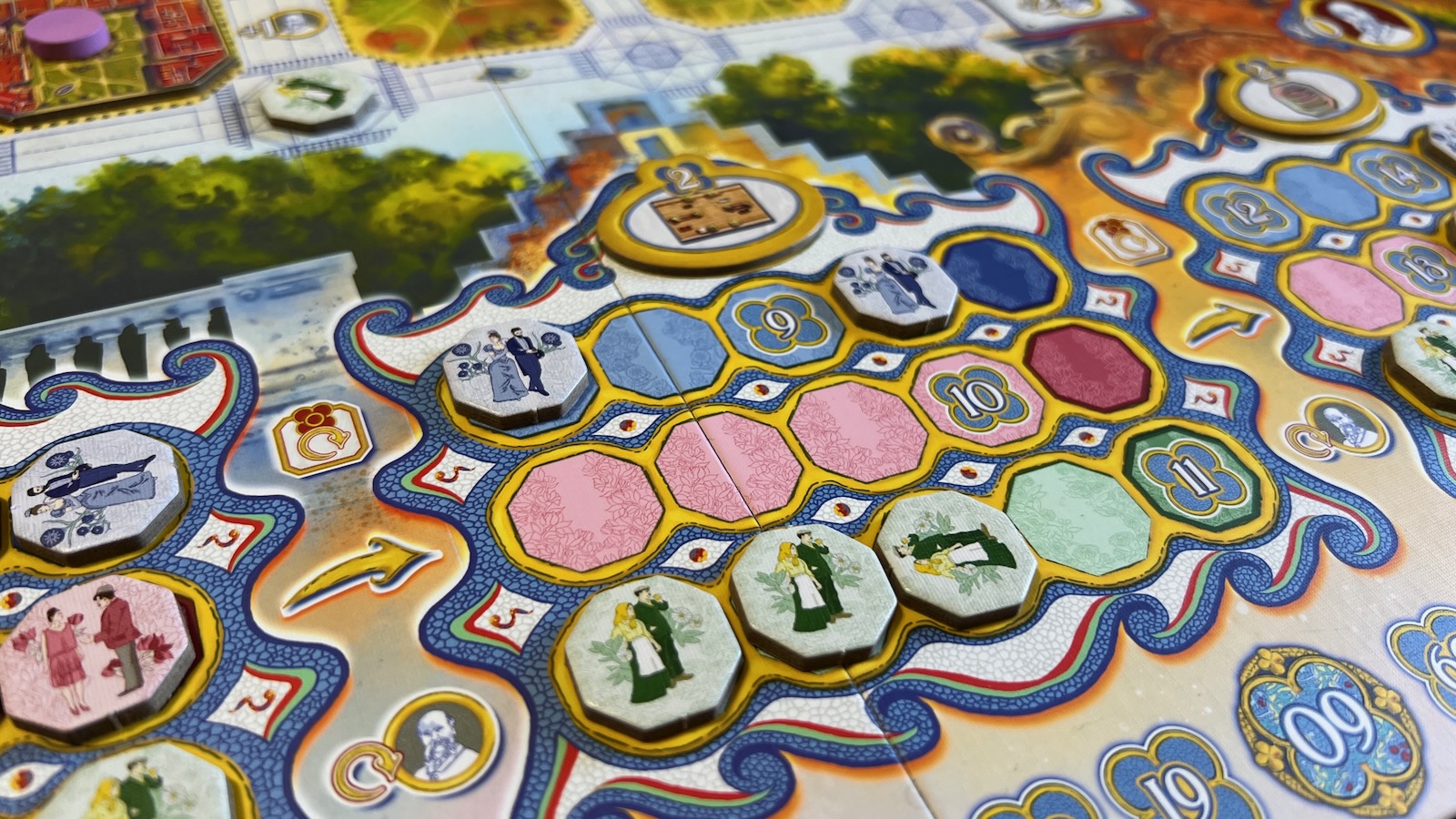
Barcelona is a lot of fun and utilizes a number of mechanics within the game to great effect. Action selection is done by placing your two randomized worker/citizen tiles. Even the order in which you place your worker stack is part of the strategy because a building you don’t want, using a worker color you don’t want, could be triggered. Finding an intersection that is free for you to take the actions you want can be difficult if other players have already used the space, so you may have to sacrifice or compromise to move forward with your game. These action tiles can be randomized each game, so different intersections give different combinations each time you play. With the randomness of some of the set up, the replayability level is high. The player count of the game also changes the strategy. With two players, you have more actions available on the main board and have more ability to manipulate when buildings get built. In higher player counts, intersections get taken up faster, but then buildings can get built fast as well. Either way, you have to adapt to the board state as other players take their turns.
The solo mode of Barcelona is a fun experience as well. In the solo mode you play against famed architect Antoni Gaudi as the automa character. Gaudi uses a deck of cards and a meeple to determine where and what actions he takes. Gaudi will earn Gaudi points instead of resources and turns them straight into victory points. The player will play the game using normal rules. A nice thing about the solo mode is that is not a beat your own score. Gaudi can be leveled to different difficulty levels and scores points, which makes it much more enticing to get a solo game on the table.
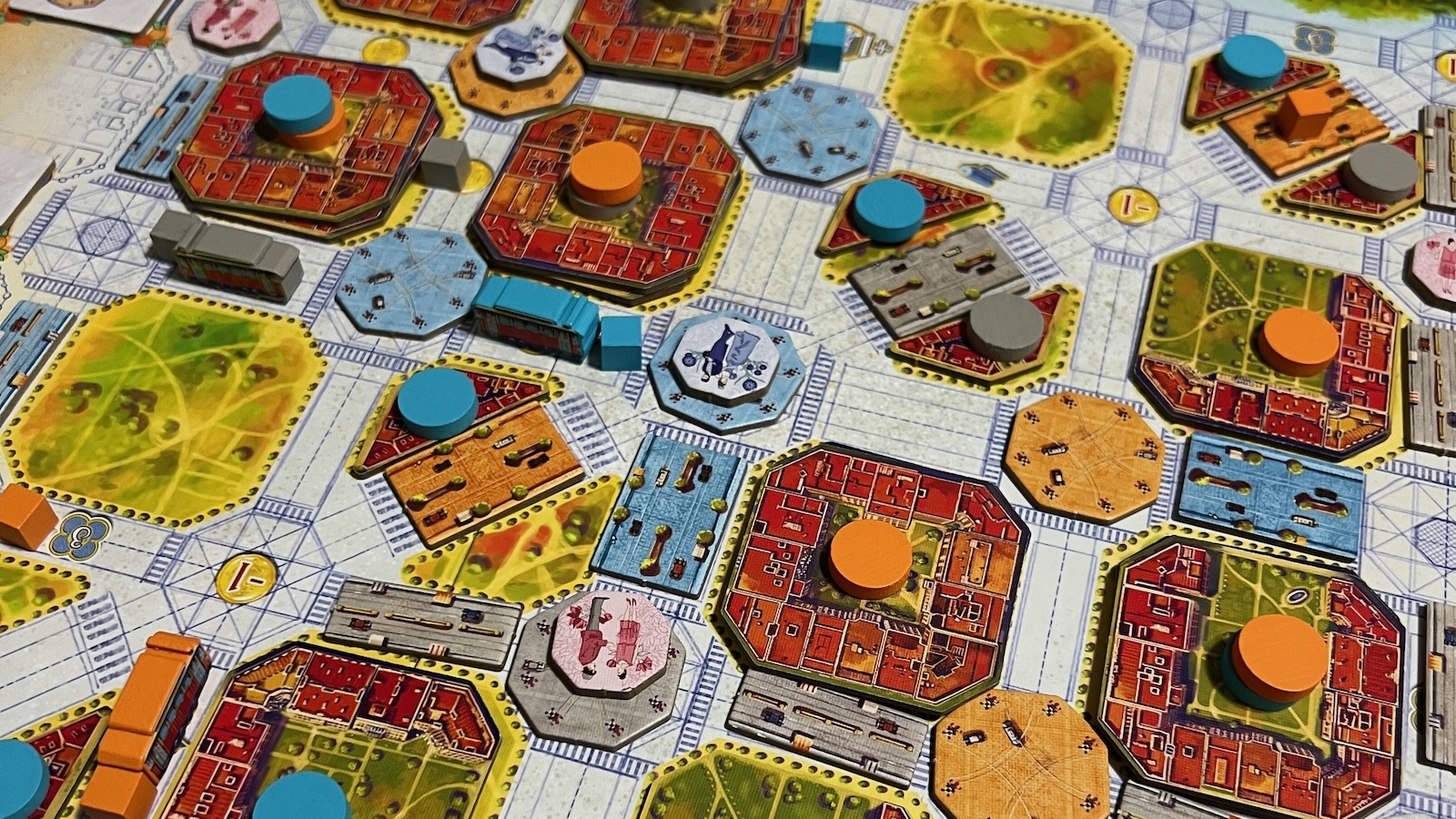
I hope you like scoring points, because there are a lot of them in this game. The game comes with 100/200 and 300/400 scoring tiles which after one gameplay, I never thought they would get used. However, after a few times through and learning how the mechanisms work together, I was able to jump that score up quite a bit. I still question whether scoring in the 200-300 range is needed and whether there could be a way to dilute the score a bit. The scoring, however, was a small wrinkle in an otherwise great gaming experience.
Something about Barcelona clicks on a few different levels. The gameplay is strategic and makes you adapt to the board state on every turn. That scratches the brain itch. The other thing Barcelona does is scratch the heart itch. Something about the simple mechanics, the beautiful design and color palette, and the attention to detail in the historical presentation leaves you with a warm feeling of satisfaction that you just don’t get from every game. Barcelona is a beautiful marriage of many different design aspects and I will be looking forward to getting it to the table many times in the future.
Barcelona
Excellent
The city of Barcelona is expanding. You take on the role of an architect sent in to help. Place new citizens on the board to take actions such as building roads, moving your tram around the city, placing down cobblestone streets for bonuses, building public service buildings, and gaining new end game goals. Impress the master architect, Ildefons Cerdà, to gain big combos and outscore your opponents. A beautiful addition to the table with fun combos, tight decisions, and points; lots and lots of points.
Pros
- A great melding of historical theme and gameplay mechanics
- The colors and artwork pop as you grow your city
- When you get to use your 300/400 point disc, you feel like you’ve conquered the city
Cons
- Do we need that many points?
- The solo mode can get repetitive after a few plays through
